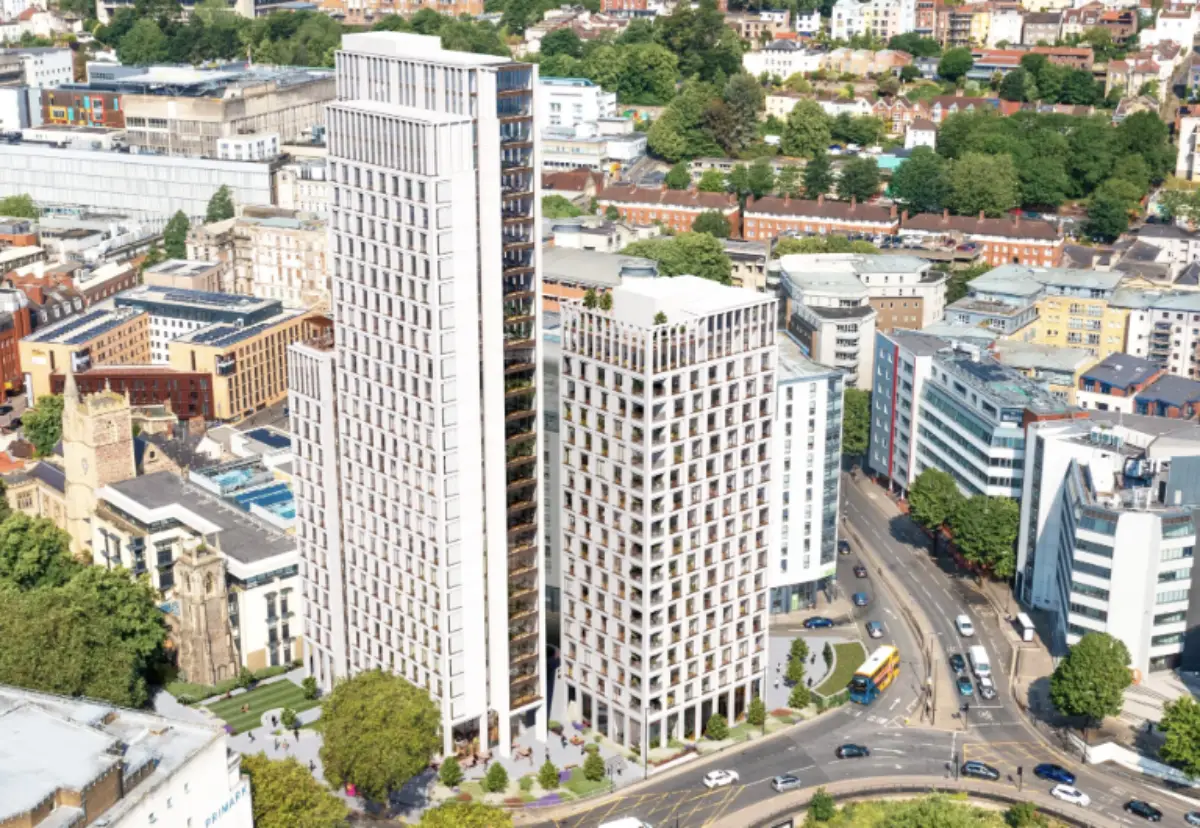In collaboration with Whitbread, Developer Olympian Homes has submitted plans for what will soon become Bristol’s tallest building. The project, designed by architect Hodder+Partners, aims to revitalise an ageing Premier Inn at St James Barton roundabout in the city centre.
The ambitious proposal by Olympian Homes entails the redevelopment of the site, renamed St James Square, into an 18-storey co-living homes project and a 28-storey building dedicated to student accommodation. The co-living segment will comprise 132 homes, with 20% designated as affordable housing with local housing allowance rents. The purpose-built student accommodation (PBSA) building will offer 442 bedrooms.
Oliver d’Erlanger, senior development manager at Olympian Homes, expressed the opportunity to transform the site into a place that connects various parts of the city, such as Broadmead, Bristol Bus Station, the Bear Pit, and St James’ Park. Bristol’s tallest building project aims to create attractive and safe public spaces and open up views to the listed St James’ Priory.
READ ALSO: HS2 Engineers Complete UK’s Heaviest Bridge Installation
The Impact of Highrise Residential Projects in the UK
Highrise residential projects have become increasingly prevalent in the UK’s urban landscape, profoundly impacting the country’s housing market, economy, and social fabric. These towering structures have brought about a range of positive and negative consequences that shape the lives of individuals and communities.
One significant positive impact is the maximisation of limited urban space. With land scarcity in urban areas, highrise projects offer an efficient solution by accommodating more residents in a compact footprint. This increased housing supply addresses the persistent issue of housing shortages and provides opportunities for urban regeneration.
However, concerns have been raised about the potential negative consequences of highrise developments. Some argue that such projects can disrupt the visual harmony of historic cityscapes and alter the character of neighbourhoods. The intensified density may also strain existing infrastructure, leading to increased traffic congestion, pressure on public services, and a decreased sense of community.
Furthermore, there is a need to consider the social impact of highrise living. Studies suggest that the vertical nature of these developments can lead to a lack of social interaction and isolation among residents. Adequate communal spaces and amenities provision is crucial to mitigate this effect and foster a sense of community within highrise buildings.

